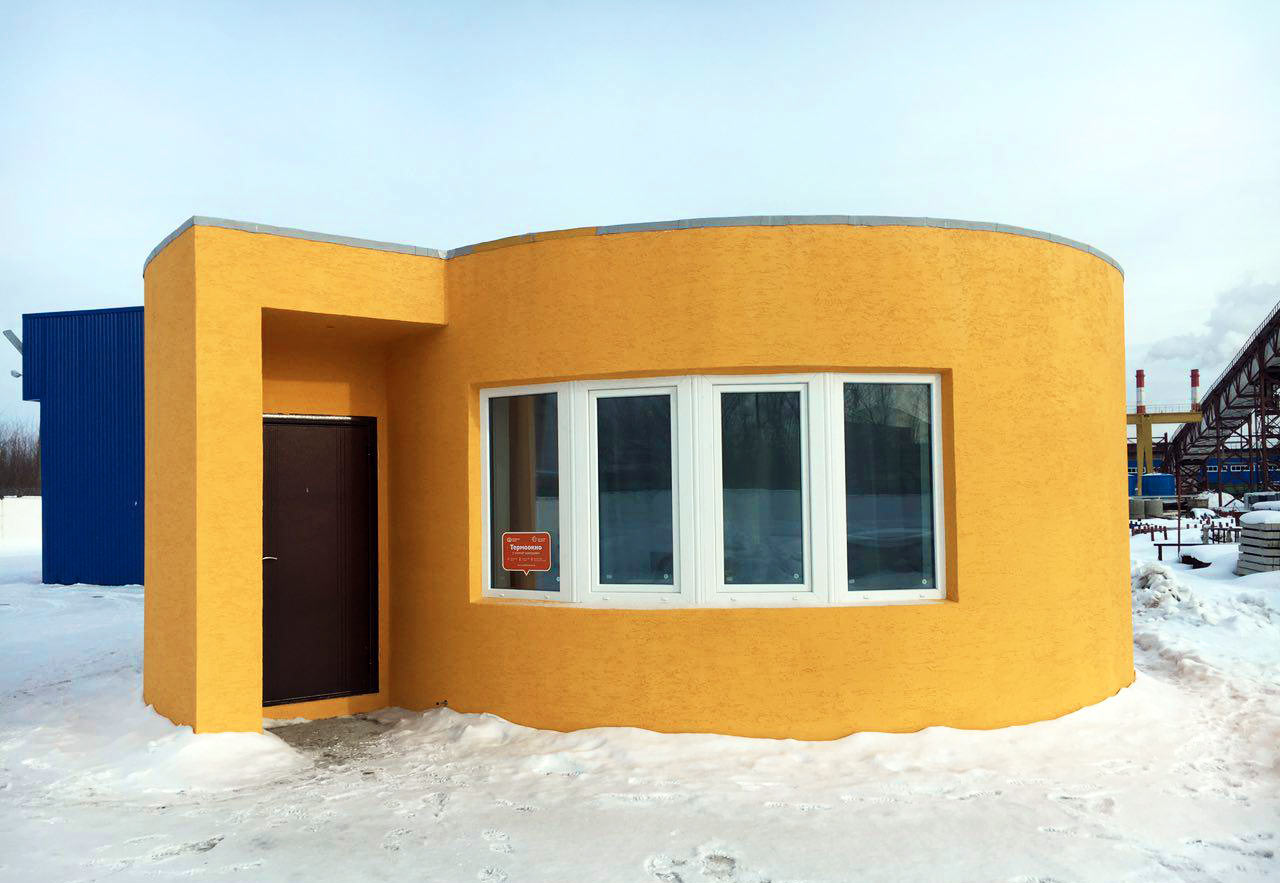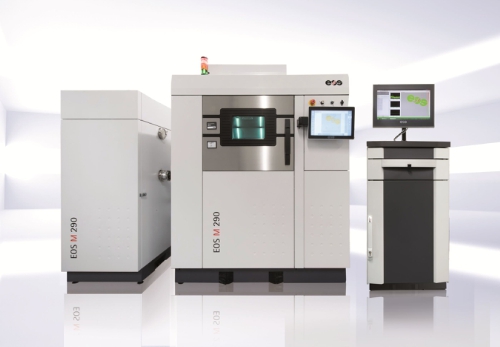This technology has already opened up a new possibility for the foundry industry, namely the fast and economic production of complex castings. Classic production processes show weaknesses or are reaching their limits. With 3D printing technology, whether for prototypes, individual parts or small series, seemingly impossible geometries can be produced quickly, precisely and cost-effectively. Speed and free design possibilities are the key features of this technology. In addition, the use of large-format 3D printing systems and a wide range of materials for many sectors opens up more and more new possibilities for use. In the meantime, the technology is being used in the automobile industry for engineering, the pump industry and aviation.
Sidebar


VOXELJET UNVEILS NEW 3D PRINTING TECHNOLOGY
HIGH SPEED SINTERING PROCESS FOR THE PRODUCTION OF END-USE PARTS
voxeljet, the leading manufacturer of 3D printing systems for industrial applications, specialized on Powder-Binder-Jetting of plastic and sand, has announced the release of its High Speed Sintering (HSS) process for November 2017. The process was initially developed by Prof. Neil Hopkinson and is licensed to voxeljet from Evonik and Loughborough University. Combined with voxeljet’s binder-jetting expertise, the high speed sintering process has been further developed into a productive and precise technology.
USABLE FOR ALL KINDS OF PLASTIC APPLICATIONS
In contrast to voxeljet’s present solutions, which focus on the foundry industry, the new HSS process enables printing of parts with properties and quality similar to Selective Laser Sintering, Multi Jet Fusion or injection molding. Versatile and fully functional prototypes such as brackets, buckles, shoe soles, and other functional parts for end use can be produced. Additional application examples for HSS parts include interior design parts of cars and designs of product packaging.

Exhibitors at SGI Dubai 2018 will bring 3D technology to the show
Dubai’s push to be the 3D printing hub casts its shadow at Sign & Imaging Dubai 2018 where a multitude of solutions can be seen.

The first on-site house has been printed in Russia
 The first house printed using mobile 3D printing technology has been built in Stupino town, Moscow region. The Apis Cor and PIK companies have successfully completed the project which was announced in December 2016.
The first house printed using mobile 3D printing technology has been built in Stupino town, Moscow region. The Apis Cor and PIK companies have successfully completed the project which was announced in December 2016.
HOW IT WAS BUILT
In December 2016, the Apis Cor company in cooperation with PIK proceeded to print the building using a mobile 3D printer. Construction took place at the Apis Cor company’s test facility in the town of Stupino, on the territory of the Stupino aerated concrete factory. Printing of self-bearing walls, partitions and building envelope were done in less than a day: pure machine time of printing amounted to 24 hours.
After completing the wall structures, the printer was removed from the building with a crane-manipulator.
The area of the printed building is 38 m².
For the first time in the Russian construction practice a house was printed as a whole, rather than assembled from pre-printed panels.
Design of the single-story residential house is rather unusual. This project was selected specifically, as one of the main purposes of this construction is to demonstrate the flexibility of equipment and diversity of available forms. The house can be of any shape, including the familiar square shape, because the additive technology has no restrictions on design of new buildings, except for the laws of physics. It means it’s time to talk about the new fantastic potential of architectural solutions.
The house was erected in the coldest time of the year. Winter has added complexity to the project participants, as the use of concrete mixture, that is used as the printing «ink», is only possible at temperatures above 5° C. Although, the equipment itself is able to operate in temperatures down to minus 35° C. The problem was solved by setting up a tent which provided the required temperature.
Soon, using new materials, such as geopolymer, you will be able to print a house at any time of the year.
WHO HELPED
The developer of the unique equipment, Apis Cor, approached the matter of erecting the house throughly and invited five companies as partners, known for their innovative approaches.
www.apis-cor.com

adidas uses Carbon’s “tunable” lattice to replace foam
Carbon’s technology is changing the way products are being created. By partnering with Carbon, adidas was able to develop the Futurecraft 4D midsole that will allow adidas to tune cushioning properties throughout the shoe, and ultimately provide bespoke athletic footwear. This lattice innovation, enabled by Digital Light Synthesis™, was previously impossible through traditional midsole manufacturing methods.

Dassault Systèmes Digitalizes the Value Creation Process for Industry 4.0 Initiatives at Hannover Messe 2017
At Hannover Messe 2017, Dassault Systèmes will demonstrate how the 3DEXPERIENCE platform supports companies in any industry that are implementing industry 4.0 initiatives to digitally connect all departments along the value-added chain. In hall 6, booth K30, visitors can experience the fully integrated, digitally supported value creation process of a packaging company, from customer requirements to the store shelf.
Siemens and Materialise technology integration streamlines product design through 3D printing
Siemens and Materialise have integrated additive manufacturing (AM) technology from Materialise into Siemens NX software, streamlining the design to manufacturing process for the rapidly growing universe of products being produced using AM (a.k.a. 3D printing). The new solution leverages proven Materialise technology to enable NX computer-aided design, manufacturing and engineering (CAD/CAM/CAE) software to accurately and completely prepare CAD models for powder bed fusion and material jetting 3D printing processes. As a result, the time necessary to go from a completed product design to a fully 3D-printed part could be reduced by 30 percent or more. A partnership agreement between the two companies, announced by Materialise on January 6, 2017, enables Siemens’ product lifecycle management (PLM) software business to sell the integrated solution through its global sales channels.

UL's Performance Materials Division Introduces New Plastics for Additive Manufacturing Program ("Blue Card Program")
UL, a global safety science organization, today announced a new Plastics for Additive Manufacturing Program (Blue Card Program). Specifically targeting materials for 3D printing, this new program serves as an extension of UL's existing Plastics Recognition Program (Yellow Card Program).

Parts for Production: How Oracle Printed 10,000 Server Mounts For an End-use Technology Application
When Carbon launched their revolutionary 3D printing breakthrough on the TED stage in 2015, it did not take long for the Oracle Labs team to take notice. Researchers in this forward-thinking R&D unit tasked with advanced development at Oracle, knew exactly where they wanted to put Carbon’s CLIP (Continuous Liquid Interface Production) technology to work. With Carbon, Oracle was able to design and print an extremely precise bracket hardly an inch in size, enabling a 3D-printed production volume solution for their new research server. Carbon is proud to count their partnership with Oracle as one of a growing number of examples of Carbon enabling end-use parts in manufacturing-quality materials, all in record time.

EOSTATE MeltPool: Automated, Intelligent, Real-Time Process Monitoring For Direct Metal Laser-Sintering (DMLS®)
Process monitoring and analysis per spot, per layer, per part; minimizing risk and reducing quality assurance costs
STRATASYS STRENGTHENS REACH IN EDUCATION SECTOR IN THE UK WITH NEW PARTNER EMCO
Stratasys EMEA, a subsidiary of Stratasys Ltd. (Nasdaq:SSYS), the 3D printing and additive manufacturing solutions company, today announced that it has extended its UK reseller network with the appointment of Emco, a leading distributor of 3D printers and scanning products.

 Deutsch (Germany)
Deutsch (Germany)  Polski (PL)
Polski (PL) 









